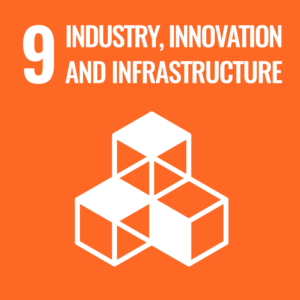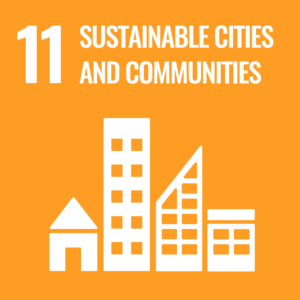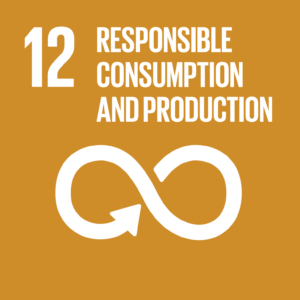 How Can Sustainable Design Reduce Environmental Impact and Increase Building Performance?
How Can Sustainable Design Reduce Environmental Impact and Increase Building Performance?
In today’s world, environmental sustainability in building design is paramount, offering numerous opportunities to minimize environmental harm while enhancing overall performance. This blog post delves into essential strategies for creating eco-friendly buildings that benefit both the environment and stakeholders economically. Let’s explore how sustainable design can make a significant difference!
Introduction to Sustainable Design
Sustainable design is pivotal in architecture and construction, aiming to mitigate buildings’ environmental impact while prioritizing occupant well-being. With escalating concerns about climate change and resource scarcity, sustainable design has gained prominence, emphasizing structures that are eco-conscious, energy-efficient, and economically viable. Key principles include reducing carbon emissions, conserving water, and promoting occupant health through strategies like passive solar design and eco-friendly materials. By integrating environmental, economic, and social considerations, sustainable design optimizes building performance holistically.
Key Strategies for Reducing Environmental Impact
Key strategies for reducing environmental impact in building design encompass various approaches such as:
- Energy Efficiency: Enhance building performance with energy-efficient systems and passive design strategies, like proper insulation and orientation to maximize natural light and ventilation.
- Water Conservation: Implement measures like low-flow fixtures and rainwater harvesting to reduce water usage.
- Sustainable Materials: Use renewable and recycled materials with low environmental impact such as bamboo and cork.
- Waste Management: Minimize construction waste through careful planning and recycling.
- Green Roofing: Install green roofs to mitigate environmental effects and provide habitat.
- Sustainable Site Planning: Design with environmental consideration and pedestrian accessibility.
Incorporating these strategies into building design significantly minimizes environmental impact, fostering a sustainable future and contributing to a greener built environment.
Case Studies: Examples of Successful Sustainable Building Designs
Several successful sustainable building projects in the EU showcase innovative and environmentally friendly architecture. For instance:
- Bosco Verticale (Milan): stands out as one of Italy’s most remarkable sustainable architecture examples. It consists of two residential towers, each with facades covered by 2 hectares of vegetation. This lush greenery not only enhances the building’s aesthetics but also contributes to a beneficial microclimate in Milan. By absorbing CO2 and fine particles, the vegetation helps to purify the air and improve the city’s environmental quality.
- Nido D’Infanzia La Balena (Reggio Emilia): exemplifies an eco-friendly childcare center designed for the future. The entire structure is made of wood, ensuring high thermal insulation. Additionally, it has a rainwater harvesting system, a heat pump, and solar panels, making it almost energy-independent. Because of its large windows, the building enjoys abundant natural light, reducing reliance on artificial lighting. La Balena is not only environmentally sustainable but also designed to be safe and earthquake-resistant, prioritizing children’s comfort.
- The Edge (Amsterdam): is a leading example of sustainable architecture and workplace design. Completed in 2015, it focuses on energy efficiency, boasting an extensive solar panel system that covers its facade. It also employs smart building technology to optimize energy usage. In addition, the building uses rainwater harvesting systems for water conservation. The Edge aims to promote occupant well-being with plenty of natural light, green spaces, and advanced ventilation systems.
All these structures prioritize energy efficiency, environmental responsibility, and occupant well-being through the use of natural materials, efficient energy management, and recycling practices. These case studies highlight the global trend towards urban sustainability and the significant impact of sustainable building design.
The Salone del Mobile 2024: Celebration of Sustainability and Innovation
The Salone del Mobile 2024 in Milan, recently concluded and highlighted by Planurban, placed a strong emphasis on sustainability. This event, marking its sixty-second edition, is a significant milestone in the history of design and furniture, known for its ability to blend tradition and innovation.
The Salone del Mobile has continually adapted to the times since its inception in 1961, remaining a beacon for companies striving for expressive strength, functional innovation, and the use of cutting-edge materials.
The event serves as a hub where ideas transform into revolutionary prototypes, offering a rich calendar of talks, workshops, and installations. The 2024 edition celebrated 25 years of SaloneSatellite, reflecting on innovations and emerging talents in design.
The Fuorisalone, held concurrently with the Salone del Mobile, defines the Milan Design Week. In 2024, its theme, “Materia Natura,” promoted a culture of conscious design, highlighting sustainability as a guiding principle. By exploring the deep connection between nature and matter, the event emphasized sustainability as fundamental for future projects.
Conclusion
In conclusion, the exploration of sustainable design underscores its pivotal role in shaping a more environmentally conscious built environment. From understanding fundamental principles to implementing key strategies, this journey reveals the critical importance of collaboration, innovation, and adaptation in reducing environmental impact while enhancing overall performance.
What Proaxxes Can Do for You
Proaxxes boasts extensive expertise in the realm of architecture and design, particularly in aiding international firms with crafting and implementing their brand strategies within Italy. Our focus lies in seamlessly integrating circular economy principles into these strategies. We offer a comprehensive suite of services, ranging from identifying optimal distribution channels to orchestrating tailored marketing and promotional campaigns.
With our support, you’ll get a better understanding of this complex landscape, while also contributing to the sustainability of Italian architecture and construction. Contact us!









